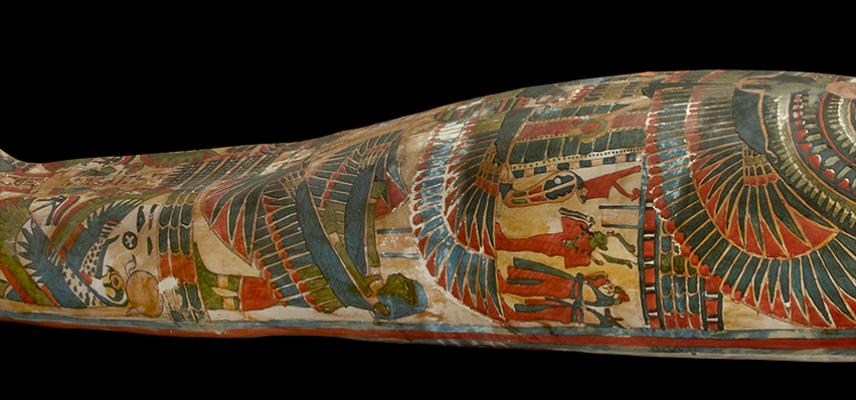LIFE AFTER DEATH IN ANCIENT EGYPT GALLERY
The objects displayed in the Life after Death in Ancient Egypt gallery all served as practical tools designed to help their owner make the journey from death to the afterlife and to provide for them for eternity. Ensuring eternal life was important for an ancient Egyptian. Non-royal Egyptians believed in different types of afterlife, including eternal life lived in the tomb as a ka (soul), and an afterlife lived in the Field of Reeds, the kingdom of the god Osiris.
A central display is the set of nested coffins and mummy of Djed-djehuty-iuef-ankh, while the long wall case explains the journey of death and includes funerary models and canopic jars showcased alongside coffin lids. Canopic jars stored the deceased’s organs after an intricate ritual to mummify the body. Amulets are also on show, which were believed to possess protective qualities.
The case on the opposite wall continues the chronological story of ancient Egyptian civilisation. Here are the remains of a chariot wheel hub, found in the tomb of Amenhotep III. Horses and chariots were introduced to Egypt from Western Asia around 1600 BCE. Entire chariots would be placed in the tombs of kings and high-ranking officials.
Colourful paintings in this gallery are by the artist Nina Davies who, with her Egyptologist husband, Norman de Garis Davies, recorded Theban tombs in the early 20th century. Her copies of wall paintings found in Ancient Egyptian tombs are considered faithful representations.














